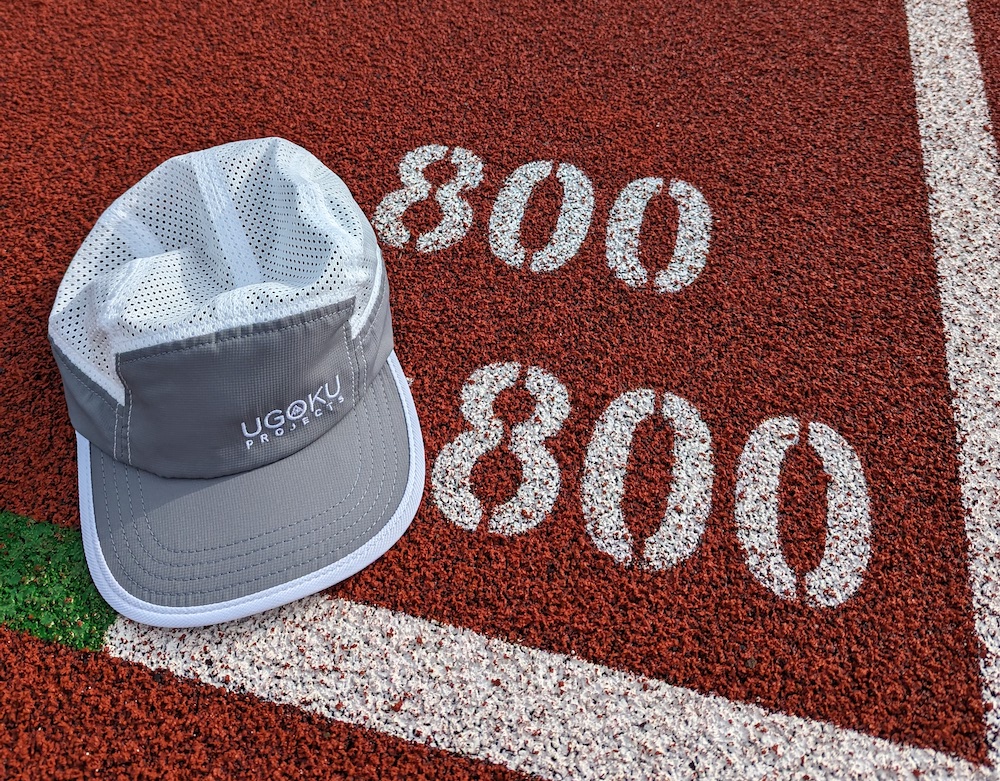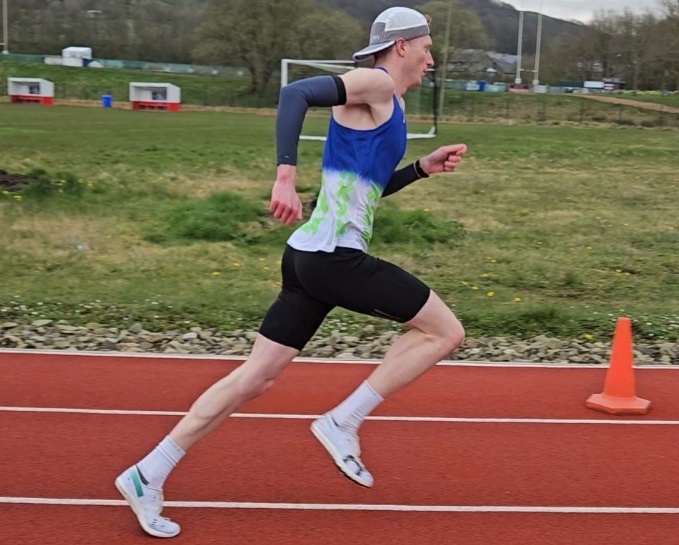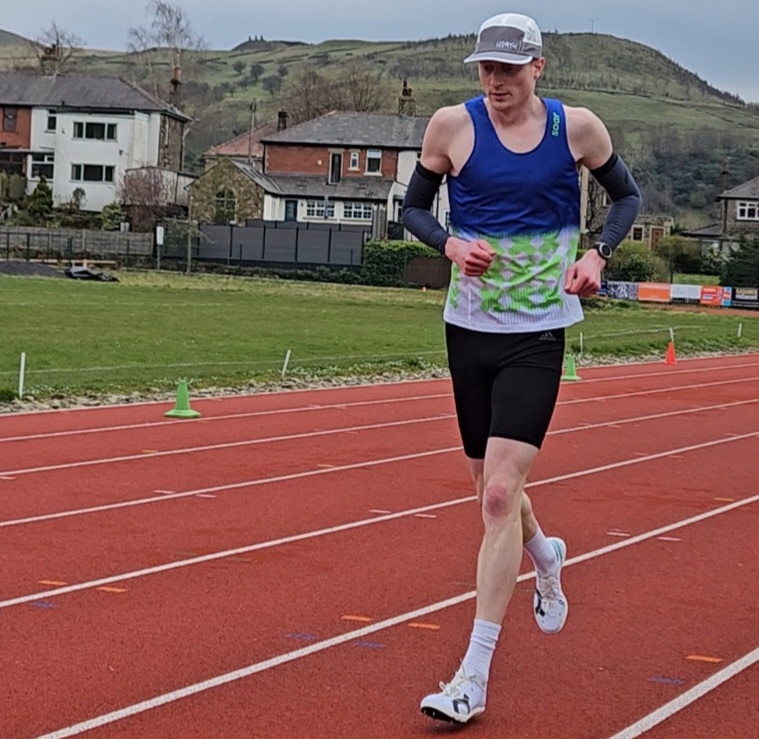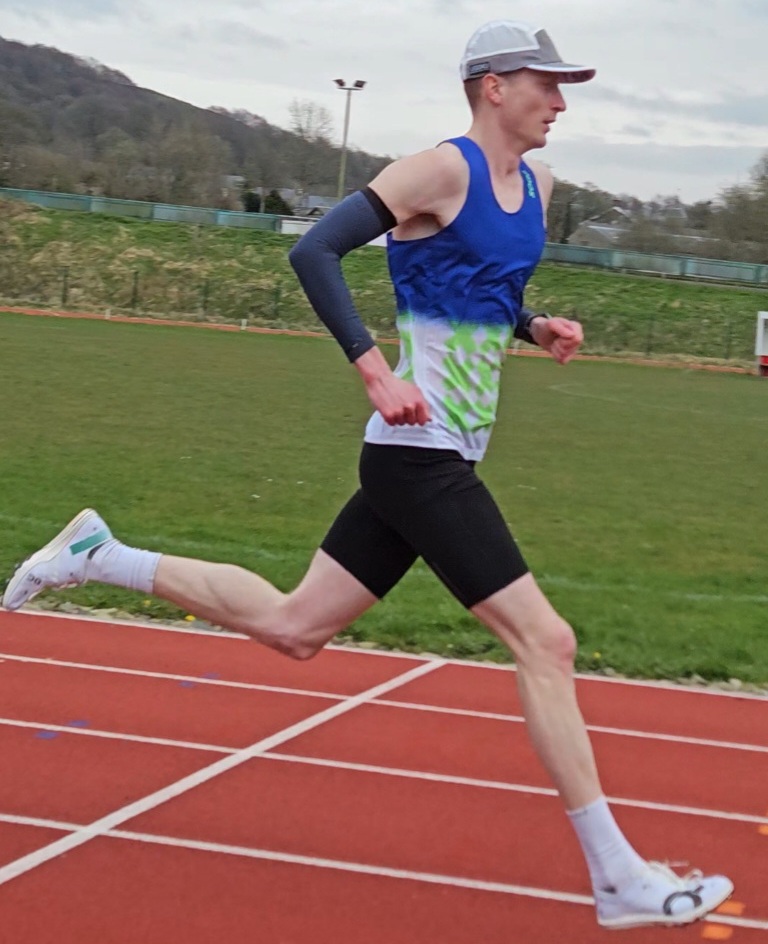
By Dominic Walton
To some people I may seem boring that I enjoy driving across the country to run in circles for a grand total of under two minutes, however for me, it is a consistent method of highlighting my progression as an athlete and the work I have been putting into training. Also I absolutely cannot comprehend how people’s bodies can still function after marathon like distances – you’re truly a superhero if you do these.
My favourite distance is 800m where I have achieved a best time of 1:48.50.
If this is an event you have never completed before, I would strongly urge EVERYONE to test themselves over this unique distance at some point in your life. The pain of this event is not necessarily harder but unlike any pain felt in other disciplines.
In my opinion, the most important parts of being successful with your running, whatever your preferred event, are proactive injury prevention and consistency with training. This is only possible if you listen to your body because it usually knows what it’s talking about.
I know lots of people, myself included, that have ignored the signs their bodies were telling them and allowing their heads to say “no keep going, that niggle isn’t anything to worry about.” This rigidity has led to countless injuries which ruins any hope of consistency.
Training to be as fast as possible for shorter events varies amongst athletes based on what their bodies can tolerate, however for most there is a large focus on injury prevention strength work and lower impact activities outside of track sessions. A week will often include a range of steady runs, gym work, high intensity track sessions, hill reps, longer runs and cross training on other equipment to take the stress from our often fragile joints.

TRACK SESSIONS –
Muscle memory is incredibly important as well as having the opportunity to run as fast as possible.
These sessions change throughout the year as the focus of training changes, however on the build up to an important race, the reps get shorter and faster and the recoveries longer.
Here we work on power output, maintaining form during fatigue and getting training our mind to tolerate the discomfort of the pace you are running.
HILL SESSIONS –
When I switched coach back in 2015, I quickly started making huge amounts of progress. Besides his outstanding input I attribute hill sessions as being the reason I made my breakthrough in athletics.
I tend to run longer hill sprints where the focus is still on power but you’re hitting your aerobic systems. Distances of around 200-300m at a fast pace usually hits the spot.
Whilst I may just be a simple track runner, these sessions can help anyone build power and speed which can be useful as your legs begin to fade at the end of a long race.
S&C –
For a power based event as short as 800m, it makes sense to incorporate power based exercises including weights. It’s rare I lift anything that will turn any heads, but placing a focus on speed through the main movement and slow as I reload.
Plyometrics also help to bulletproof joints and provides some explosive power when it’s needed at different phases of the race.
CROSS TRAINING –
An incredibly important part of my training is utilising different sports, hobbies and machines to meet the volume required for successful running without putting too much pressure on my body and risking stress fractures – These are incredibly common amongst track runners.
I invested in my home gym as I developed different injuries throughout the years so I have access to a rowing machine and static bike at all times.
Time on feet is also very important so if I’m not working, I’ll be walking my dog and when I’ve finished my training sessions at the weekend, I’m often found hiking in the Lake District or around the local countryside.

An example week:
MONDAY – 30 minutes easy run (AM) + 40minutes bike or rowing machine and core work (PM)
TUESDAY – 3x(400, 300, 200 with 90s rest), 5 minutes between sets. Then a flat out 400m at the end.
WEDNESDAY – 40 minutes on the bike/rower + 30mins easy running.
THURSDAY – 3 sets of 3x300m reps. 3 minutes recovery for the first set, 2 minutes recovery for the second set and 1 minute for the third set.
These are at target 800m pace which is impossible to achieve on the last set but it is about trying to manage how much your pace falls off.
FRIDAY – REST (Thank you, thank you, thank you.)
SATURDAY – 8x300m hill reps (full out with a walk back recovery), the hill should be around 5-7% incline.
SUNDAY – 45 Minutes of running and 45 minutes on the bike (AM) + 40 minutes on the bike/rower and STRENGTH AND CONDITIONING (PM)
For a middle distance runner, there are many important factors but none more so than the incredibly intense sessions, usually with large recoveries.
If I was to give any advice I would say this – Don’t wait until you can’t run anymore before you decide to make a change. If you’re struggling, you’re far better off occasionally relieving your joints from the impact of running through other forms of exercise as opposed to injuring yourself and having to stop altogether. I’ve definitely learned that a week on the bike is far better than a month off with tendonitis.
That, in my opinion, is the best way to maintain consistency and run really fast!

Dominic Walton is an elite 800m track runner you can follow his journey on instagram @domswalton
He recently finished 5th at the UK Indoor Championships 800m final and will be competing in National League meetings, BMC events and the British outdoor championships/olympic trials later this year.